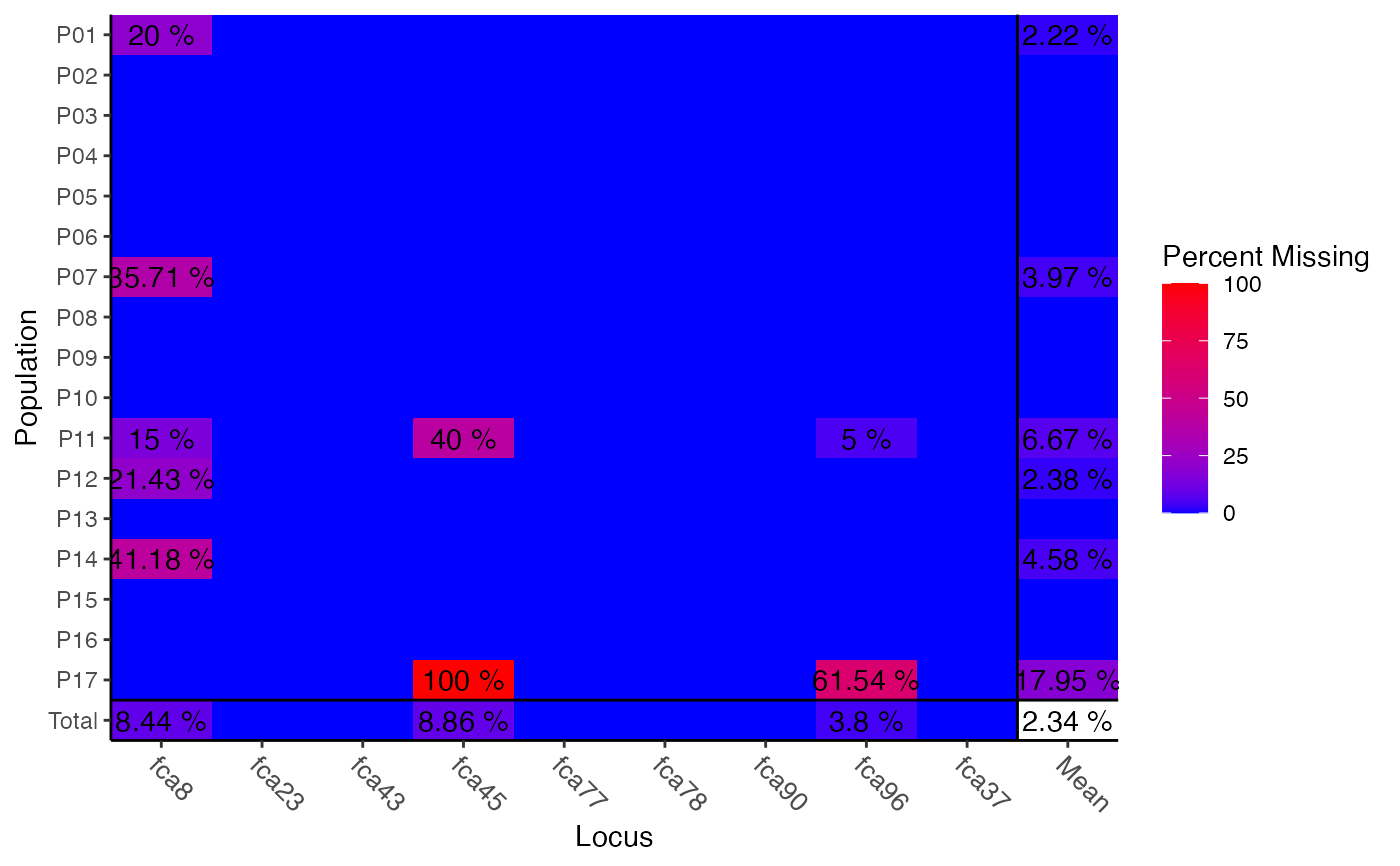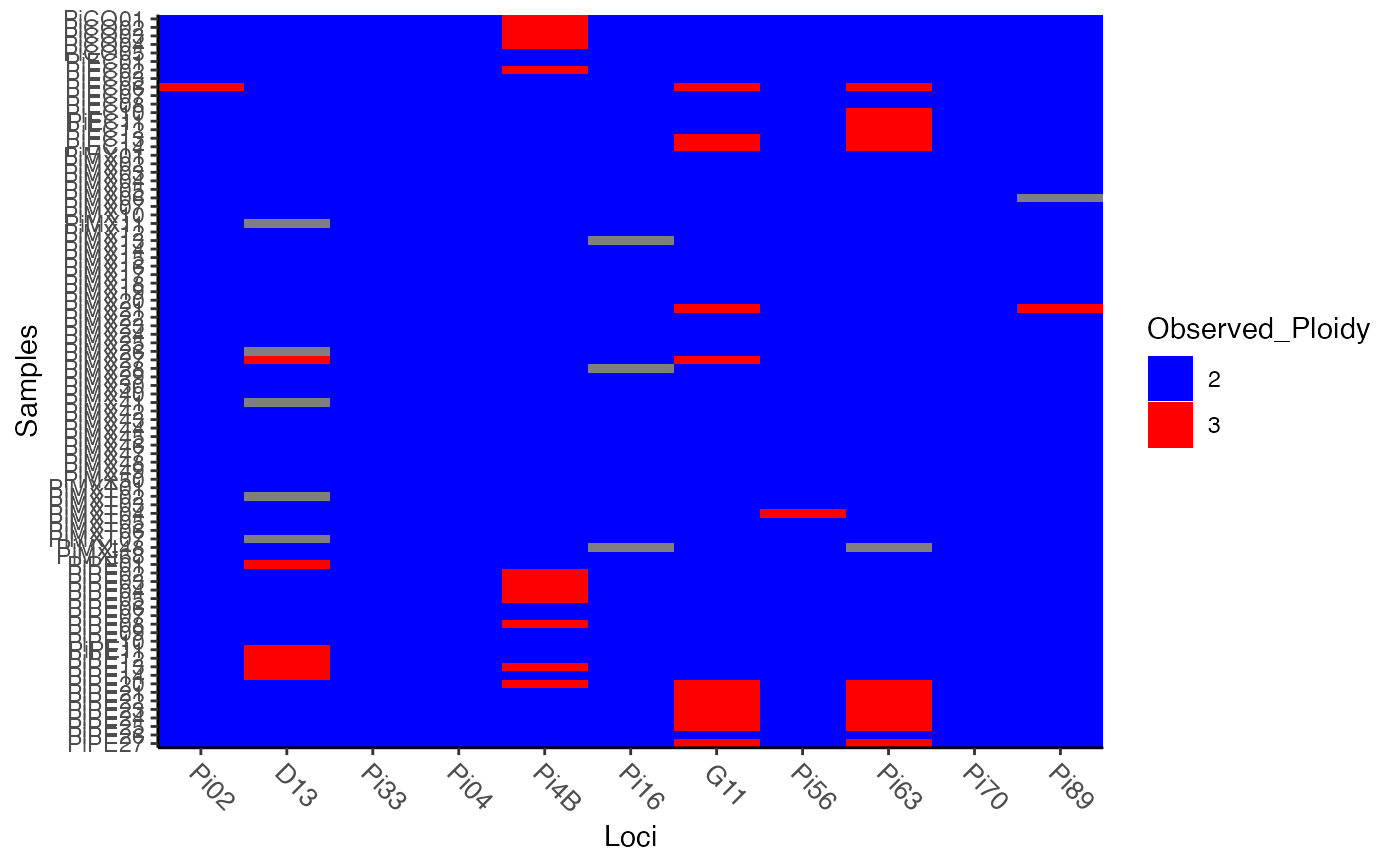
Create a table summarizing missing data or ploidy information of a genind or genclone object
Source:R/visualizations.r
info_table.RdCreate a table summarizing missing data or ploidy information of a genind or genclone object
Usage
info_table(
gen,
type = c("missing", "ploidy"),
percent = TRUE,
plot = FALSE,
df = FALSE,
returnplot = FALSE,
low = "blue",
high = "red",
plotlab = TRUE,
scaled = TRUE
)Arguments
- gen
- type
character. What information should be returned. Choices are "missing" (Default) and "ploidy". See Description.- percent
logical. (ONLY FORtype = 'missing') IfTRUE(default), table and plot will represent missing data as a percentage of each cell. IfFALSE, the table and plot will represent missing data as raw counts. (See details)- plot
logical. IfTRUE, a simple heatmap will be produced. IfFALSE(default), no heatmap will be produced.- df
logical. IfTRUE, the data will be returned as a long form data frame. IfFALSE(default), a matrix with samples in rows and loci in columns will be returned.- returnplot
logical. IfTRUE, a list is returned with two elements:table- the normal output andplot- the ggplot object. IfFALSE, the table is returned.- low
character. What color should represent no missing data or lowest observed ploidy? (default: "blue")- high
character. What color should represent the highest amount of missing data or observed ploidy? (default: "red")- plotlab
logical. (ONLY FORtype = 'missing') IfTRUE(default), values of missing data greater than 0% will be plotted. IfFALSE, the plot will appear un-appended.- scaled
logical. (ONLY FORtype = 'missing') This is for whenpercent = TRUE. IfTRUE(default), the color specified inhighwill represent the highest observed value of missing data. IfFALSE, the color specified inhighwill represent 100%.
Value
a matrix, data frame (df = TRUE), or a list (returnplot
= TRUE) representing missing data per population (type = 'missing')
or ploidy per individual (type = 'ploidy') in a genind
or genclone object.
Details
Missing data is accounted for on a per-population level.
Ploidy is accounted for on a per-individual level.
For type = 'missing'
This data is potentially useful for identifying areas of systematic missing data. There are a few caveats to be aware of.
Regarding counts of missing data: Each count represents the number of individuals with missing data at each locus. The last column, "mean" can be thought of as the average number of individuals with missing data per locus.
Regarding percentage missing data: This percentage is relative to the population and locus, not to the entire data set. The last column, "mean" represents the average percent of the population with missing data per locus.

